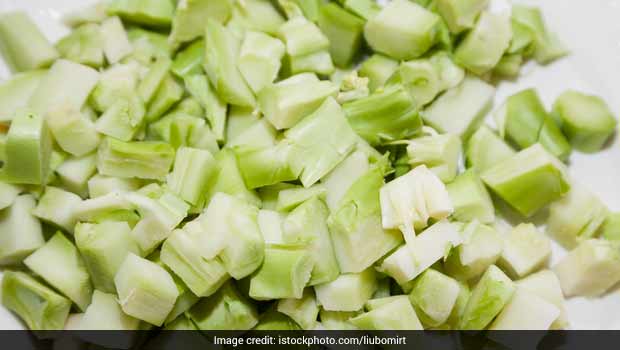After reading the title of this article, you probably think I’m crazy. And although you are not far from the truth, but now is not about that. The fact is that I love greens, I like to eat them just like that, I like to add them to dishes – but I really don’t like it when instead of finely (or coarsely, depending on the context) cut leaves, there are also stems in the plate.
The tough, often harsh-tasting stems on the plate completely kill the dish, no matter how good it is, and for me this is a sure sign that the chef is either clumsy or does not care what people think of him and what he has prepared.
I myself, of course, do not chop the greens together with the stems, but always scrupulously cut off the leaves, and I urge you to do the same. And when you take this as a rule, you will probably have a question – what to do with the stems. Of course, you can just throw them away. But if desired, they will find another, more useful application.


Sauces, broths, pickles and marinades
Of course, the most obvious way to use the stems for business is to use them in dishes to which they can give their flavor, after which they can simply be thrown away. If you cook broth (remember that I wrote a detailed post on how to cook broth) or prepare a sauce, they will greatly benefit if you add a bunch of, say, parsley when cooking them. And here it is quite possible to do with some stems, and come up with a different fate for the leaves. The same goes for a variety of pickles and marinades – you can add stems to them, which you can simply get rid of in the end.
Fry
You have probably fried celery stalks in hot oil more than once to reveal their aroma for cooking, so why not do the same with any other stalks? The stems can be finely chopped and fried along with other vegetables for use in any dish, be it baked pepper soup, shrimp risotto, thick sauce, toppings, or whatever. If the recipe calls for sautéed onions and / or garlic, then there is a place in it for the stems.
Bandage
With the help of stems, it is quite possible to decorate dishes, but this must be done wisely. For example, a parsley stalk can be used to bandage anything, from pancakes or a “bundle” of young carrots to fish with vegetables, and so on. Tear off the extra branches, leaving only the stem itself, then blanch it for softness and you’re done, now you can bandage anything with them. I suppose you have quite a few other ideas for how you can use the stems to decorate your dishes.
Pesto and green oil
You probably know that a sauce like pesto can be made not only from basil, but in general from any greens – parsley, cilantro, tops of young radishes, and so on. But if the pliable and fleshy basil leaves are best ground in a mortar, then the rest of the greens are best chopped in a blender that will cope equally well with the leaves and stems.
To be sure, it is better to blanch the stems separately from the leaves, and then add the herbs to a blender along with oil, spices and nuts, and punch until smooth. In a similar way, you can prepare a fragrant green oil: blanch the herbs along with the stems, add the olive oil, and then punch in a blender. The resulting oil can be used to decorate any dish by simply adding a few drops on top. For making both pesto and green oil, absolutely any blender will work.


Dry
Well, everything is clear here. My main complaint with the stems is their toughness (dill especially suffers from this), but if they are dried and chopped, the issue of texture will disappear by itself. Ground dried greens can be used as a seasoning for soups, vegetable dishes, salad dressings, and more. For example, when baking meat, I like to make up a new mixture of spices every time in order to grate it properly before cooking, and there is absolutely always a place for dried herbs in this mixture.
Aromatic Salt
Finely chopping the stems, you can mix them with coarse salt and dry them, as a result of which you get a fragrant salt that can be used to salt any dishes – it will be tasty, aromatic and beautiful. Of course, you don’t have to limit yourself to just the stems – in addition to them, you can use citrus zest, spices like cumin or fennel seeds, and so on. I have already described the basic recipe for aromatic salt in all the details.
Cilantro
In a sense, Kinza was unlucky – she is either loved or hated, and I read that the latter is almost genetically determined, and nothing can be done about it. But if you belong to the first category, cilantro will open up a lot of creativity for you, since it is some exception to the rule that I wrote about at the very beginning: cilantro stalks are tender and juicy, and you can use them in any of the ways , described above, and together with the leaves. For example, for guacamole, cilantro can be taken along with the stalks, but if you are cooking Thai Tom Yam soup or green curry, cilantro stalks, ground to a paste state, will be used. Well, you still think I’m crazy? ..










